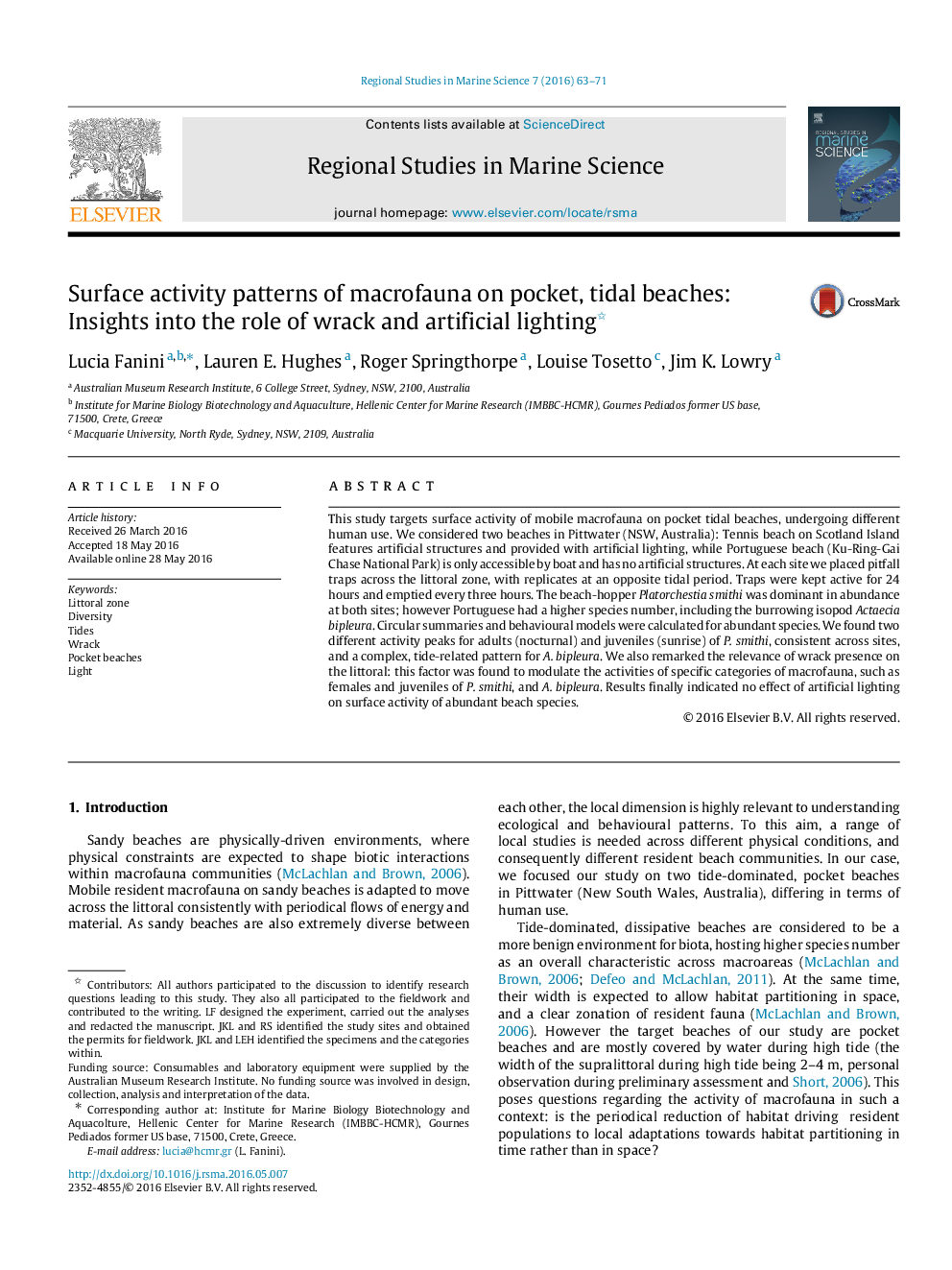| Article ID | Journal | Published Year | Pages | File Type |
|---|---|---|---|---|
| 6363230 | Regional Studies in Marine Science | 2016 | 9 Pages |
Abstract
This study targets surface activity of mobile macrofauna on pocket tidal beaches, undergoing different human use. We considered two beaches in Pittwater (NSW, Australia): Tennis beach on Scotland Island features artificial structures and provided with artificial lighting, while Portuguese beach (Ku-Ring-Gai Chase National Park) is only accessible by boat and has no artificial structures. At each site we placed pitfall traps across the littoral zone, with replicates at an opposite tidal period. Traps were kept active for 24 hours and emptied every three hours. The beach-hopper Platorchestia smithi was dominant in abundance at both sites; however Portuguese had a higher species number, including the burrowing isopod Actaecia bipleura. Circular summaries and behavioural models were calculated for abundant species. We found two different activity peaks for adults (nocturnal) and juveniles (sunrise) of P. smithi, consistent across sites, and a complex, tide-related pattern for A. bipleura. We also remarked the relevance of wrack presence on the littoral: this factor was found to modulate the activities of specific categories of macrofauna, such as females and juveniles of P. smithi, and A. bipleura. Results finally indicated no effect of artificial lighting on surface activity of abundant beach species.
Related Topics
Physical Sciences and Engineering
Earth and Planetary Sciences
Oceanography
Authors
Lucia Fanini, Lauren E. Hughes, Roger Springthorpe, Louise Tosetto, Jim K. Lowry,
